Another project from the Design Interactions work in progress show!
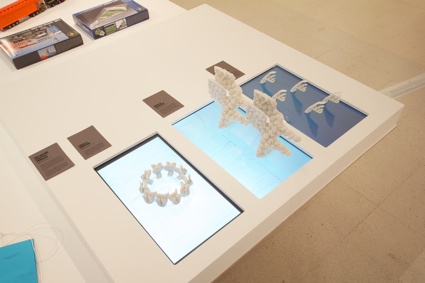
This one is smart and thought-provoking and i’m looking forward to seeing how it will shape up for the graduation show.
Michail Vanis‘s project suggests that our romantic ideas and ideals regarding nature – a nature that has to be preserved exactly as it is- are holding us back from finding new ways to interact with the world surrounding us. Vanis’ Neo-nature project invites us to reconsider our relationship to nature and adopt a more rational but also more daring and more techno-mediated approach to ecological thinking and to conservation.
The first chapter of the work, Animalia, deals with the animal kingdom and proposes three alternative ways to conserve coral reefs. In all three alternatives, the humans speed up the coral’s evolution by genetically modifying it to adapt to the new environmental conditions that put the species in danger. The motivation behind why each coral is created illustrates how humans can donate, protect, or exploit.
The first scenario envisions a coral colony, a Stonehenge-like monument, that conservationists have generously financed and donated in order to save the species from extinction. The corals pass plankton efficiently between each other, creating a temple of nature, a celebration of marine life, and a spectacle for visitors to witness.
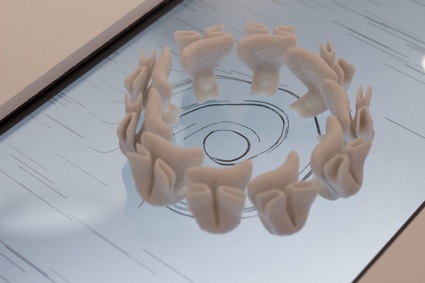
The second scenario sees a coral species seeded in areas where tsunamis might hit. In case of tsunami, the coral takes 70% of the impact. Most of the colony would die in the process but the humans would be saved.
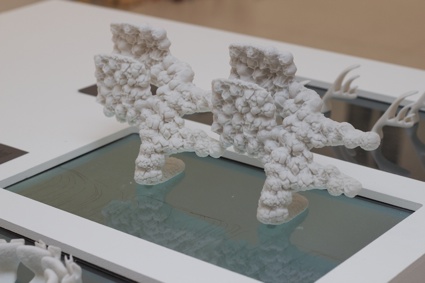
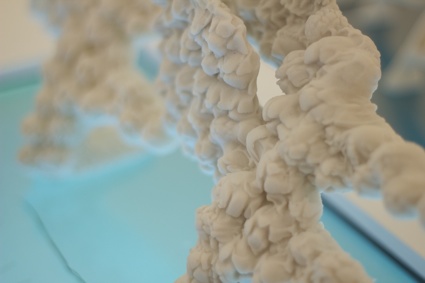
The third scenario sees coral being exploited for the benefit of corporations. A hydrodynamic coral would be bio engineered to efficiently slipstream and merge water currents into powerful single streams. At the end of the coral colony, a convenient jet of water is exploited by the creators of the coral to harvest electricity.
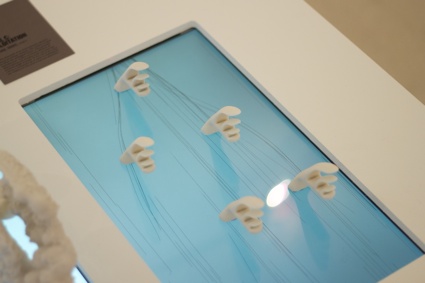
I asked Michail (who, i should add, means the pandas no harm whatsoever) if he could tell us more about Neo-Nature:
Hi Michail! You wrote an essay that bears the cruel title of “Let the Pandas Die” to accompany or rather introduce the Neo-Nature project. In this text, you suggest that we might have to adopt alternative thinking in ecology and conservation. Could you briefly explain why traditionalist view of ecology and conservation might not be enough to save ourselves and the environment?
There is a lot of paradoxical thinking in ecology and conservation at the moment. Large sums of funding go towards programmes which aim to sustain organisms that are arguably at the end of their lifetime. We accept evolution and the cyclical nature of ecology, yet we try to halt nature from changing, from progressing. In a way, the nature that we are experiencing now is the perfect nature. Any other alternative seems to spoil the romantic, pure nature that we have created in our heads. Slavoj Zizek puts it very nicely: “[Ecology] is a balanced world which is disturbed through human hubris”.
The ideology that we have created to define nature as human beings actually stops us ethically from experimenting with new technologies. For example, if we collectively agreed to save a species from extinction, maybe we could genetically modify it to survive the new conditions that we have introduced. This seems far from possible at the moment because you have two parallel schools of thought: the scientists and the romanticists. The scientists are prepared to take risks and talk openly about modifying organisms, the climate, the natural world. On the other hand, the romanticists protect the ideological, paradoxical nature that they believe in truly on ethical, emotional and guilt-driven grounds. This disagreement is a huge problem in conservation.
Has your research been inspired by existing scientific or commercial projects?
One big influence of mine is the Weather Modification Office in China. What I find fascinating is that China provides a cocoon of moral freedom in which scientists can experiment with controlling the weather. Officials regularly seed clouds to combat the draught in Beijing without worrying about the influence that their actions might have on the natural world. A lot of the time they get it right. But sometimes, they get it really really wrong. Recently they accidentally caused a snowstorm that covered Beijing in snow. And in a way, that’s okay. They get it right 90% of the time, but when they get it wrong, it doesn’t stop them from trying again. This is the kind of experimental practice that has inspired my project.
Another interesting scientific project is the modification of male mosquitoes to combat insect-borne diseases. When these newly modified mosquitoes try to reproduce, their offspring dies immediately. Doing this to insects is acceptable, but try to imagine if you had the same scenario with a more loved animal. It would be completely unethical! Deciding what is okay to modify and what isn’t is completely subjective.
And more generally, have you talked to bioengineers and other scientists about the Neo-Nature scenarios?
I’ve been working with a fluids mechanic to actually shape the corals. He’s been very interesting to work with because he doesn’t treat the corals as an animal, but he treats it as a material. For the next chapter of Neo-Nature, I’m working with a climate scientist and a mechanical engineer to explore the domestication of weather control. I am also going to an interesting discussion in April, which is titled “The Future of Nature” and is organised by the Wildlife Conservation Society. Half of the audience are synthetic biologists and the other half are conservation scientists and policy makers. I think this project generates its full potential of discussion when it is debated with scientists as well as romanticists. I’m trying to make that collision happen with a series of debates and talks in the coming months.
Why did you chose to illustrate the project with corals? Is it because these marine animals are easier to manage and modify? Or because they are not ‘cute’ so we might be less concerned by their fate than by the one of the pandas?
The coral is a very fragile animal that is dying quickly, but there is a lot of opportunity to manipulate it. Corals are more important than other endangered animals because they provide a living environment for a plethora of marine life, yet they receive less funding. I also chose the coral because it’s not as sacred as the panda. It’s an animal that is usually compared to plants, not to other animals. This emotional distance makes it easier for people to consider the possibilities of modifying coral to fulfill human desire, but to also conserve it in a more artificial way.
You showed 3 models of modified corals at the WIP show. Are you planning to push the project further?
This chapter of Neo-Nature is almost complete. I wanted to suggest three new alternative strategies for saving the coral. I’m putting it in the background for now until the other chapters of the project are complete. I will be testing the coral models at the Imperial College wave tanks to test their shapes and record some videos of the water flowing through them. I’m now working on the next two chapters, which are arguably more megalomaniac! I don’t want to reveal too much though…
Thank you Michail!
